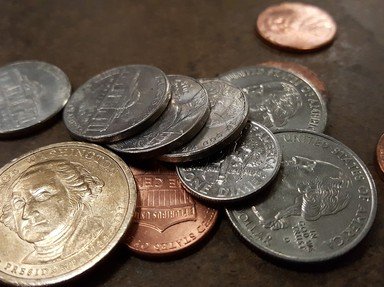Quiz Answer Key and Fun Facts
1. The wild and excessive issuing of continental dollars gave rise to what fairly predictable trouble in early America?
2. If you happened to own money issued by a wildcat bank and the bank went bankrupt, what would happen to your money?
3. The shortage of money during the American Civil War led to many unusual monetary measures. Named after a particularly interesting feature, what is the pictured note called?
4. John Gault's solution to the coin shortage during the American Civil War led him to encase what between a case of brass and layer of mica?
5. Trade dollars are the only federally-issued coins that has ever been demonetized.
6. This silver certificate states that the US Treasury has one dollar in silver payable to its bearer on demand. How much silver would you get if you tried to redeem one of them today?
7. In 1933, President Roosevelt outlawed the owning of what metal, that led to certificates like these becoming quite rare?
8. If you try to trade in this coin from 1933, you'd find the Feds hot on your trail. What denomination is this coin, of which all but one from this year are illegal to own?
9. Wooden nickels, which are often redeemable for goods but not for real money, can be classified as what?
10. These little pieces of plastic are like pogs, only they have a face value and are issued by the AAFES. How could you trade these in like normal money without any hassle?
Source: Author
nautilator
This quiz was reviewed by FunTrivia editor
WesleyCrusher before going online.
Any errors found in FunTrivia content are routinely corrected through our feedback system.

